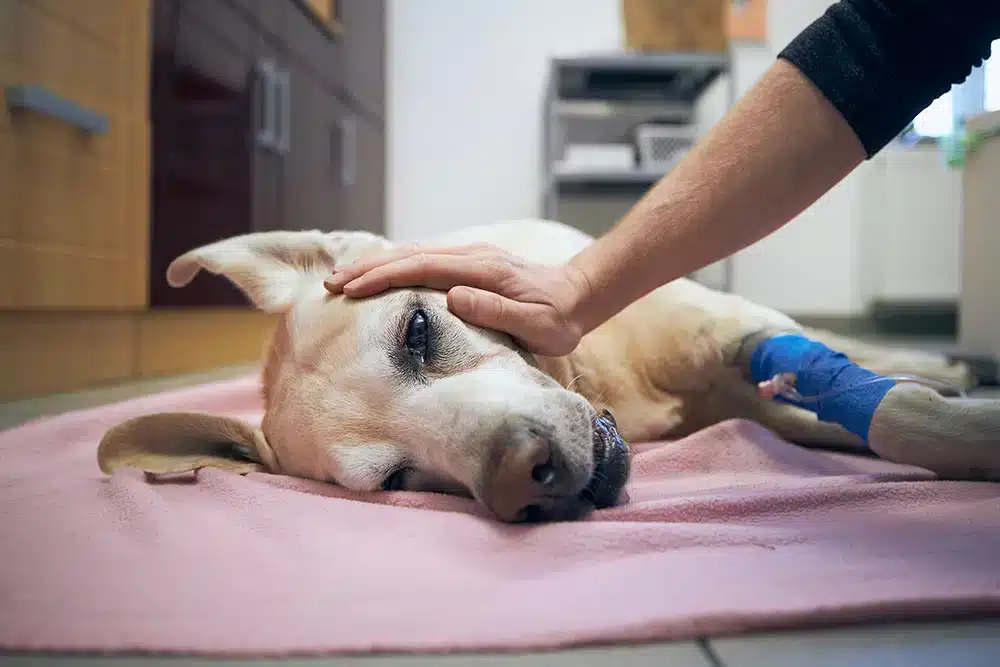Should I Stay with My Pet During Euthanasia? A Compassionate Guide for Pet Owners
Understanding Pet Euthanasia in Huntingdon Valley, PA
Saying goodbye to a beloved pet is one of the most difficult decisions a pet owner can face. Euthanasia is a compassionate choice when an animal is suffering from irreversible illness or declining quality of life. In Huntingdon Valley, PA, understanding the emotional and ethical aspects of this process can help you make the best decision for your pet. Though heartbreaking, euthanasia is designed to provide peace and dignity in your pet’s final moments.
What to Expect During Euthanasia
Pet euthanasia involves two steps:
- Sedation: A sedative is given to relax your pet, reducing anxiety and discomfort.
- Final injection: The euthanasia solution is administered, allowing your pet to pass peacefully and painlessly.
Before the procedure, your veterinarian will assess your pet’s health and quality of life to ensure this is the most compassionate option. For a detailed breakdown of what to expect, visit Love & Dignity – What to Expect.
The Emotional Impact of Euthanasia on Pet Owners
Deciding to euthanize a pet can bring a flood of emotions—grief, guilt, and even relief. These feelings are completely normal. Acknowledging and processing them is an important part of healing. Watching for signs of pain in your pet, such as withdrawal, aggression, or appetite loss, can help you recognize when it’s time to make this choice. If you need additional support, visit Pet Loss Resources and Support – Cornell Vet.
Should You Stay with Your Pet During Euthanasia?
The Comfort of Being Present
Many veterinarians and animal behaviorists believe that a pet’s last moments can be more peaceful when their owner is present. Your familiar voice and gentle touch can ease their anxiety and help them feel safe. Research suggests that staying with your pet can also bring closure and help with your own grieving process.
When Choosing Not to Stay is the Right Choice
Not everyone is emotionally prepared to be present during euthanasia, and that’s okay. If the experience feels overwhelming, it’s completely valid to step away. Veterinarians are trained to provide comfort, ensuring your pet is never alone. If you think that your emotions might add stress to your pet’s final moments, stepping away could be the most compassionate decision.
Staying for Sedation, Then Leaving
If you want to be with your pet but are unsure about witnessing the final injection, you can choose to stay until they fall asleep with the sedation. This allows you to comfort them during the initial stages and step away before the final injection is administered. Many owners find this to be a good balance between offering support and managing their own emotions.
Should Children or Other Pets Be Present?
The decision to have children or other pets present during euthanasia depends on their emotional capacity and understanding.
- Children: If your child is old enough to understand, being present can help with closure. However, younger children may struggle to process the event. Consider discussing what will happen beforehand and giving them the option to say goodbye in a way that feels comfortable for them.
- Other Pets: Some pets may benefit from seeing their companion after they’ve passed, as it helps them process the loss. However, if your pet is prone to anxiety or agitation, their presence might add unnecessary stress to the situation. If you think they may react negatively or become distressed, it’s best to keep them in a separate space.
Preparing for the Moment
If you choose to stay, preparing emotionally can help. Bringing a supportive friend or family member might make it easier. Understanding the procedure—knowing your pet will be sedated first and won’t feel pain—can also provide reassurance. For guidance on assessing your pet’s quality of life, visit How to Assess Your Senior Pet’s Quality of Life.
Frequently Asked Questions About In-Home Pet Euthanasia
- How do I explain this to my children? Be honest yet gentle. Explain that your pet is very sick and that euthanasia is a way to end their suffering peacefully. Use age-appropriate language to help them understand.
- How do I know when it’s the right time? Signs like chronic pain, loss of appetite, and difficulty moving can indicate a poor quality of life. Consult with your veterinarian for guidance.
- Should my other pets be present? If possible, allowing other pets to see and sniff the body can help them process the loss and prevent confusion or anxiety.
The Role of Your Veterinarian
Your veterinarian is there to support you and your pet throughout the euthanasia process. In addition to ensuring a painless and peaceful experience, they can help you understand your pet’s condition and answer any questions. Learn more at Love & Dignity In-Home Pet Euthanasia.
Honoring Your Pet’s Memory
After euthanasia, you’ll have options for aftercare, including cremation or burial. Discuss these choices with your veterinarian ahead of time to ensure a decision that feels right for you. If you’re looking for additional support, visit Pet Loss and Bereavement Support – APLB.
Coping with Pet Loss
- Create a Memorial: A scrapbook or framed photo can help you celebrate your pet’s life.
- Join a Support Group: Connecting with others who understand your grief can provide comfort.
- Maintain Routine: Keeping up with daily activities can offer a sense of stability.
We’re Here to Help
If you have questions or need support, please Contact Us. At Love & Dignity In-Home Pet Euthanasia, we are committed to providing compassionate care, ensuring your pet’s final moments are filled with love and peace.


